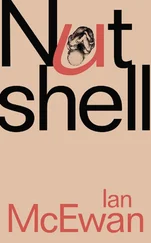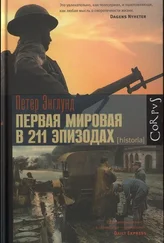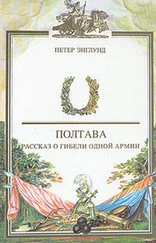In 1946, in the first elections after the war, a staggering 36 percent of Czech voters supported the Communist Party, and thus enabled them to establish a government. In Slovakia, however, the agrarian Democratic Party won in a landslide with 62 percent support. In other words, while the Czechs largely paved the way to the communist dictatorship themselves, the Slovaks got it stuffed down their throats.
Peculiarly enough, by the time of the political thaw of the late 1960s, the roles had changed completely. Now, a vast majority of the Czechs enthusiastically supported the Prague Spring’s reforms, while most Slovaks expressed reservation and sometimes even condemnation. The fact that the only Prague Spring reform that survived the invasion was the federalization of Czechoslovakia — the country was formally transformed into two republics — didn’t make the Slovaks particularly popular with the disillusioned Czechs. “While we have to put up with the Soviet occupation troops, they got their federative republic, which we subsidize with billions of korunas every year!” the Czechs groaned.
Given this background, it’s not too mysterious that Czechoslovakia finally fell apart once the Velvet Revolutionput an end to the communists’ grip on power.
Sure, the Czechs had no intentions of breaking up the federation. They only took it for granted that Czechoslovakia consisted of two equal nations, and they were a bit more equal than the Slovaks. And yes, a majority of Slovaks wanted to keep the benefits (not least the economic ones) that the federation offered, but at the same time dreamt of international recognition of Slovakia’s sovereignty. Basically, the Slovak stance in the early 1990s was strongly reminiscent of Winnie the Pooh’s famous slogan: Yes please, I’ll have both milk and honey!
Another obstacle was the two nations’ diverging perceptions of how the communists’ command economy should be transformed into a market economy.
The Czechs declared that they wanted to move quickly and implement immediate reforms to regain what was lost during the communist stagnation. The Slovaks, on their side, knew perfectly well that a substantial part of their economy was based on heavy industry and military production, both of which were hard to reform overnight. A slow pace for reforms, they argued, was necessary to avoid social distress. What’s more, Slovakia’s Catholic Church, traditionally an important opinion maker, skilfully used people’s distrust of the market economy by warning against the godless Czechs’ addiction to consumerism.
If the Slovaks and Czechs had lived in a marriage, a therapist would have probably concluded: “The marital partners have never managed to establish a common identity. They have been living side by side for twenty years, and now their personal interests have become stronger than their will to keep the marriage together. Divorce is the most sensible solution.” And that’s how it ended. The Czechs and Slovaks conducted a divorce that was almost as smooth and quick as the Velvet Revolution four years earlier. Quite an achievement compared to the terrible slaughter that was going on in Yugoslavia.
So how has the separation affected the relations between the Czechs and Slovaks? As one might expect, lots of Czechs were maliciously pleased when the lugubrious Mečiar government in the middle of the 1990s led “separatist Slovakia” into international isolation and thousands of liberal-minded Slovaks into Czech exile. But the incredible work later governments in Bratislava have done to change the course has evoked great respect among most Czechs, and there is no more paternalistic talk about spoiled little brothers.
The same attitude also seems to apply for the Slovaks. Gone are the days when they could blame the “damned bureaucrats in Prague” for everything that went wrong. Now, the Slovaks can only rely on themselves, so in one sense, it seems that the separation has made relations between the Slovaks and Czechs better than they were before.
And, of course, not all ties from the Czechoslovak days have been broken. Some 300,000 of the Czech Republic’s citizens still regard themselves as Slovaks. What’s more, Slovaks make up the largest group of foreignersin the country (officially 61,000), and the Czechs are the largest minority in Slovakia — excepting the indigenous Hungarians living alongside the Danube.
You can find the building in practically every town and city in the Czech Republic. Centrally located and often with rich architecture, the Sokol (Falcon) gymnasiums have been a cornerstone of Czech cultural life for almost 150 years. True, their importance has somewhat faded with the years, but in the collective consciousness of what it means to be Czech (see: Beer; Cimrman, Jára; Golden Hands; Ice Hockey; National Identity), Sokol is still an institution to be reckoned with.
The Falcon was born in Prague in 1862, when Miroslav Tyrš and Jindřich Fügner founded the Prague Gymnastics Union. Tyrš was a renowned aesthete and university professor who, inspired by contemporary trends in neighbouring Germany, worked out a program of gymnastic exercises, while Fügner was a wealthy banker willing to finance the startup of the organization. In addition to promoting the ancient ideal of a sound soul in a sound body, Sokol , as the Union was soon renamed, also had a nationalistic mission: to foster “energetic, self-conscious and hardy Czech men”.
Tyrš and Fügner definitely struck a chord among the Czechs. Sokol clones popped up all over Bohemiaand Moravia, among Czech emigrantsin America and even in other Slavonic cities in the Austro- HungarianEmpire. The growth was so impressive that in the 1880s Sokol’s leaders decided to restructure the organization according to a military-like system. Individual clubs were renamed battalions and grouped in regional entities, which were headed by a náčelník (chief commander) on the national level. To make Sokol’s paramilitary (and overtly anti-imperial) character completely visible, the members were also equipped with uniforms resembling those carried by the Italian revolutionary Garibaldi’s soldiers in the war against the Austrians.
As the Czech national revival (see: Czech Language) grew ever stronger in the second half of the nineteenth century, so did Sokol . By the turn of the century, the organization consisted of 630 battalions with more than 50,000 members, and its regular displays of mass gymnastics, called sleti , at Prague’s Letná Plain turned into giant demonstrations of Czech national self-consciousness. Of course, Sokol’s importance didn’t diminish after Czechoslovakia’s foundation in 1918. During the First Republic, the movement was given official blessing as a nation-building instrument and expanded to Slovakia.
Being a Sokol member equalled being a Czechoslovak patriot and a supporter of president Tomáš G. Masaryk. Since this axiom also applied to the Hussite Church (see: Religion; Jan Hus), one may deduct that a typical Czech patriot in the interwar years equalled a Protestant Sokol member, although numerous Jewswere also fervent supporters. The country’s Catholics, on their part, reacted with establishing a competing organization, Orel (Eagle), which enjoyed some support in Moravia.
Given Sokol’s patriotic-Czech image, it was no surprise that the Nazi occupants in 1941 banned the organization. Since totalitarian regimes of different ideologies have much in common, it was also not surprising that the Bolsheviksfollowed suit by dissolving Sokol and incorporating its members into an all-national sports organization. However, to give some impression of continuity, they “kidnapped” the Sokol’s national sleti and gave them a communist wrapping. Thus, every five years from 1955 until 1985, a Spartakiada was arranged at Prague’s giant Strahov stadium, where thousands of half-naked men and women from all corners of Czechoslovakia met to perform gymnastics according to the original Sokol recipe.
Читать дальше








![Theresa Cheung - The Dream Dictionary from A to Z [Revised edition] - The Ultimate A–Z to Interpret the Secrets of Your Dreams](/books/692092/theresa-cheung-the-dream-dictionary-from-a-to-z-r-thumb.webp)



